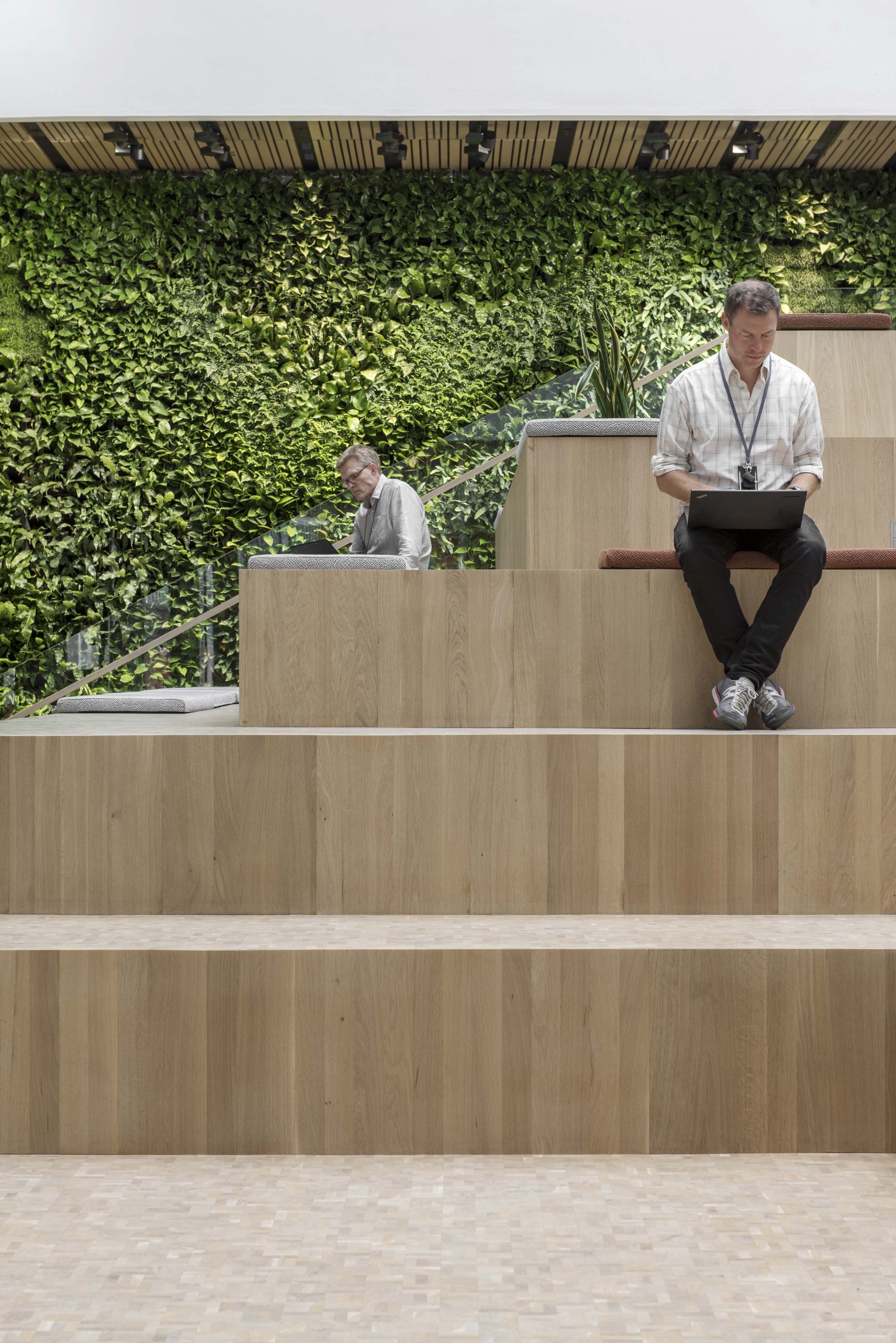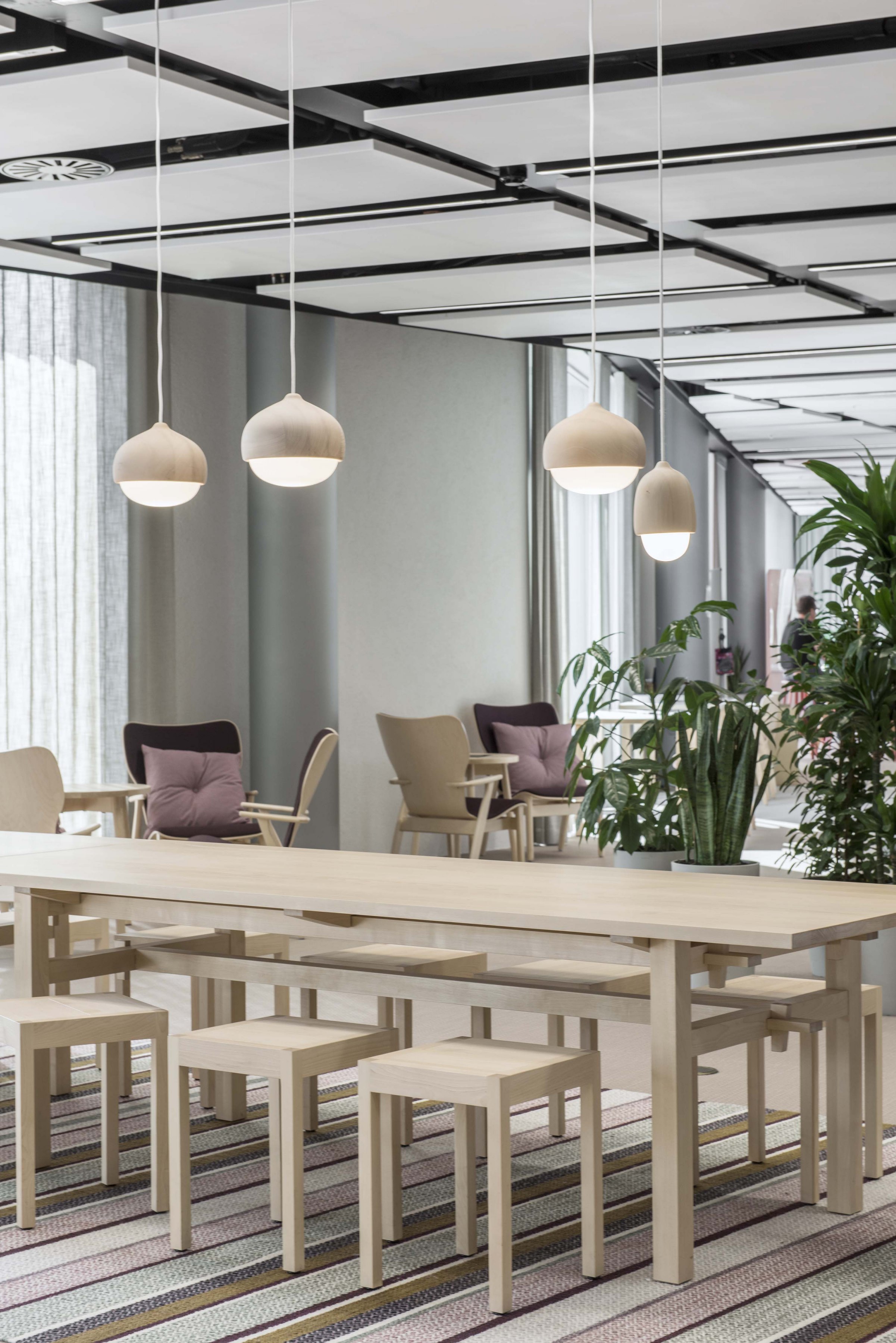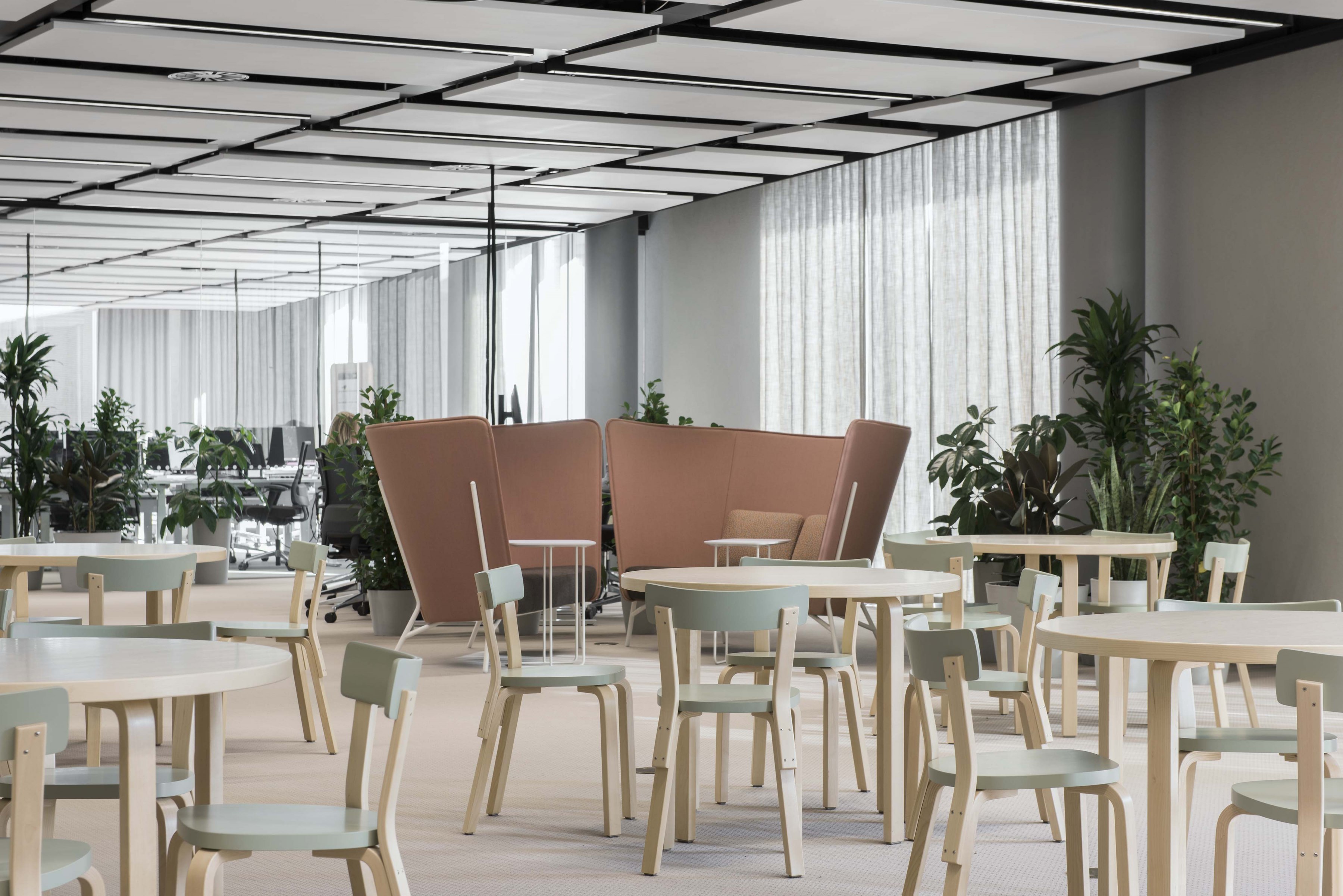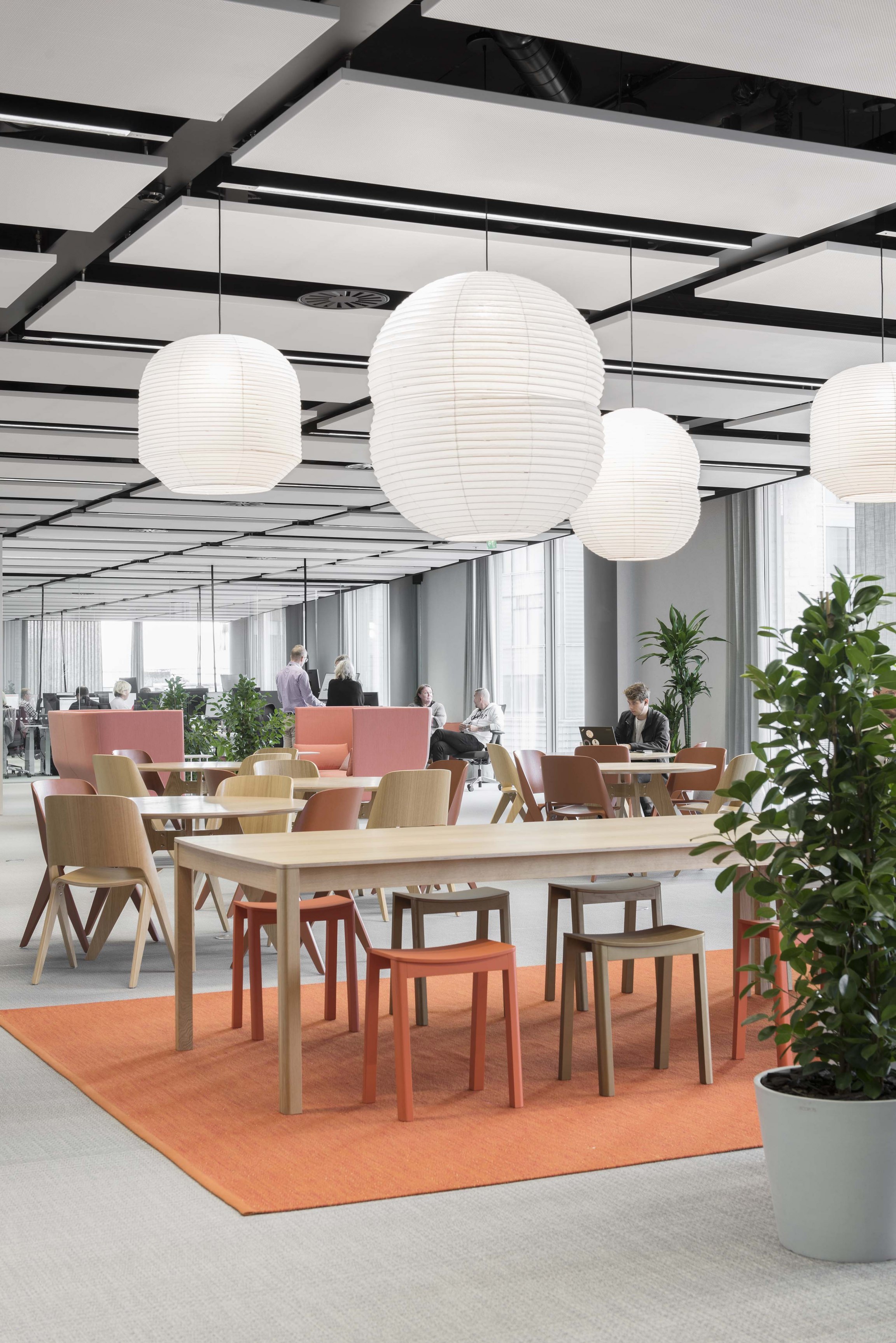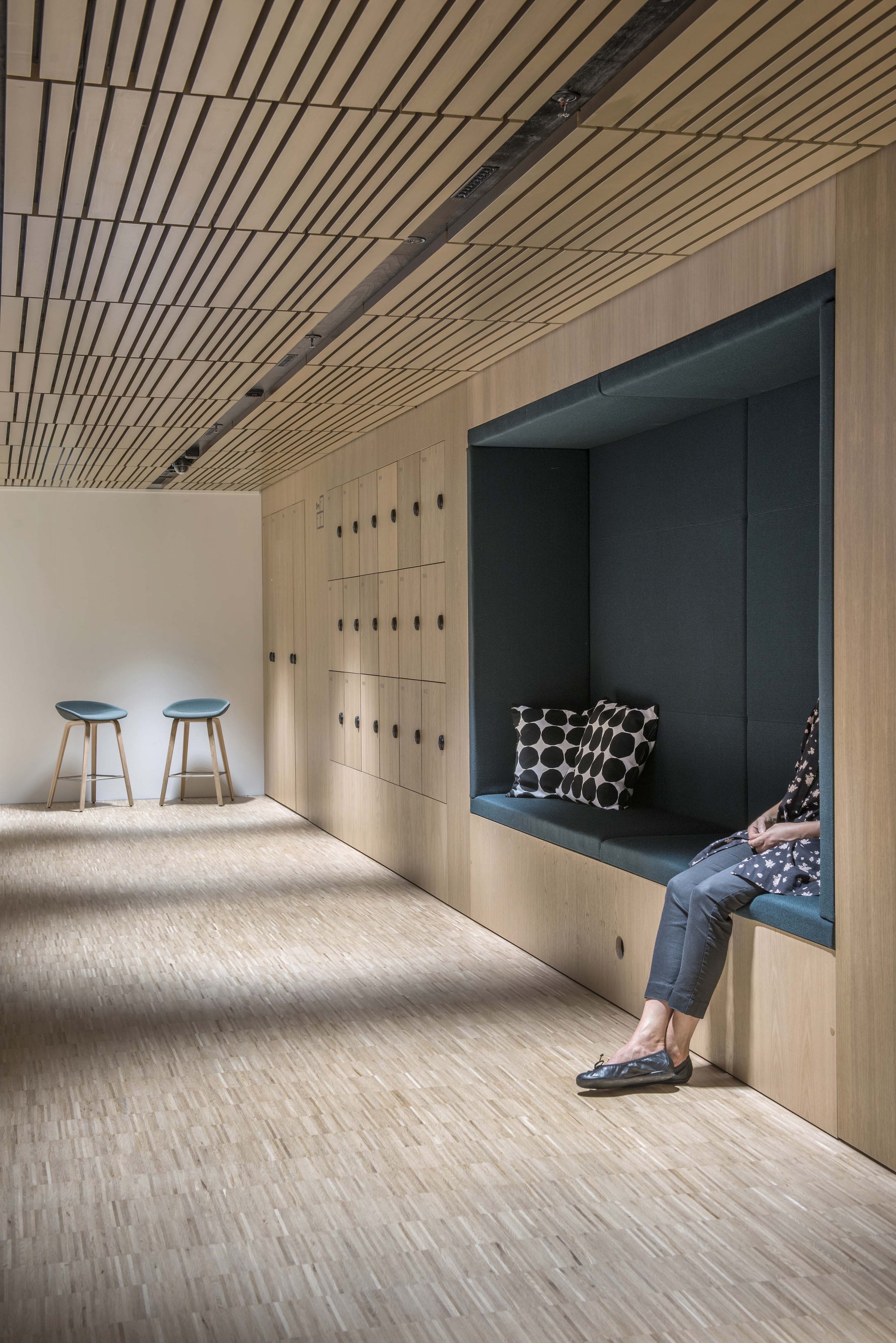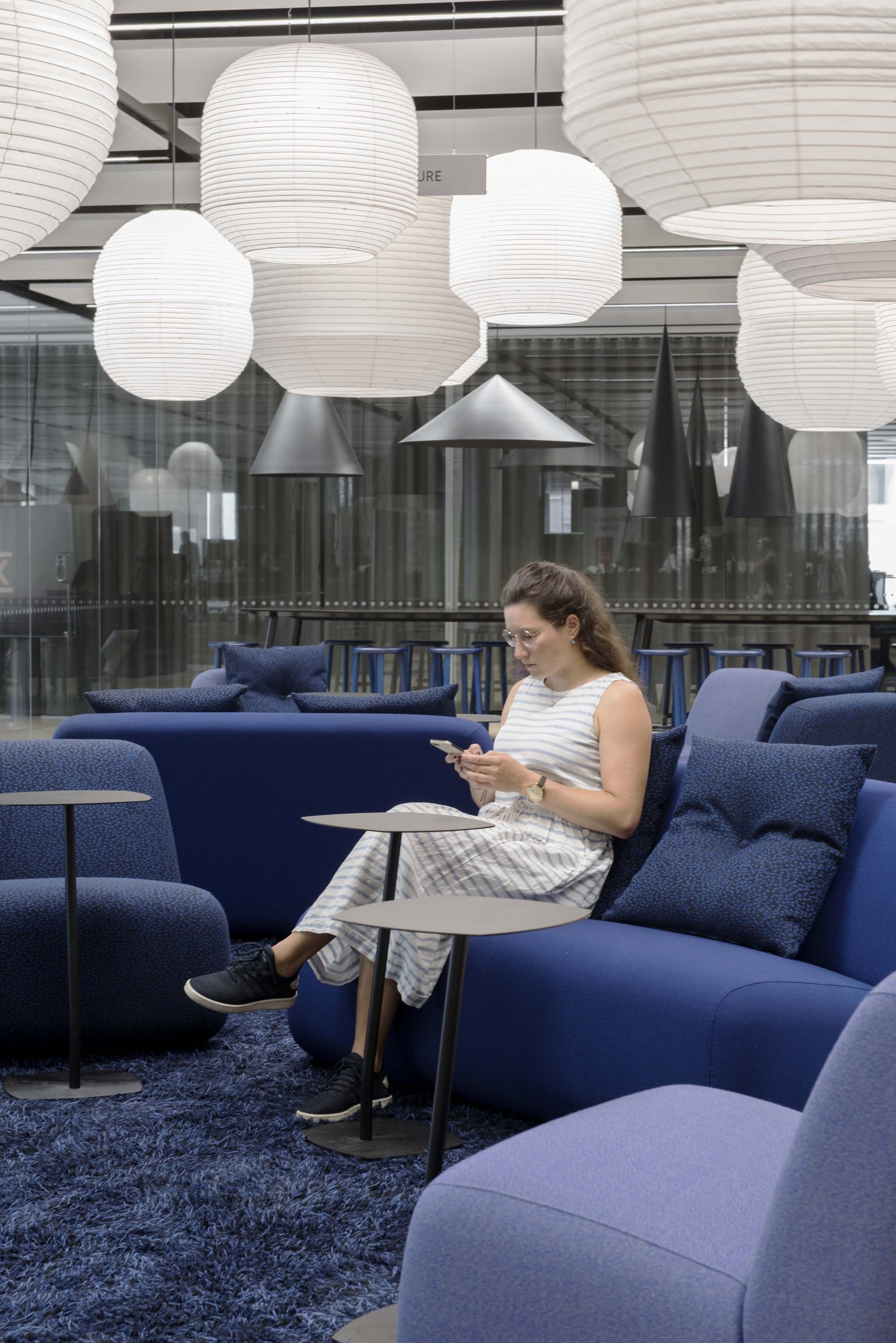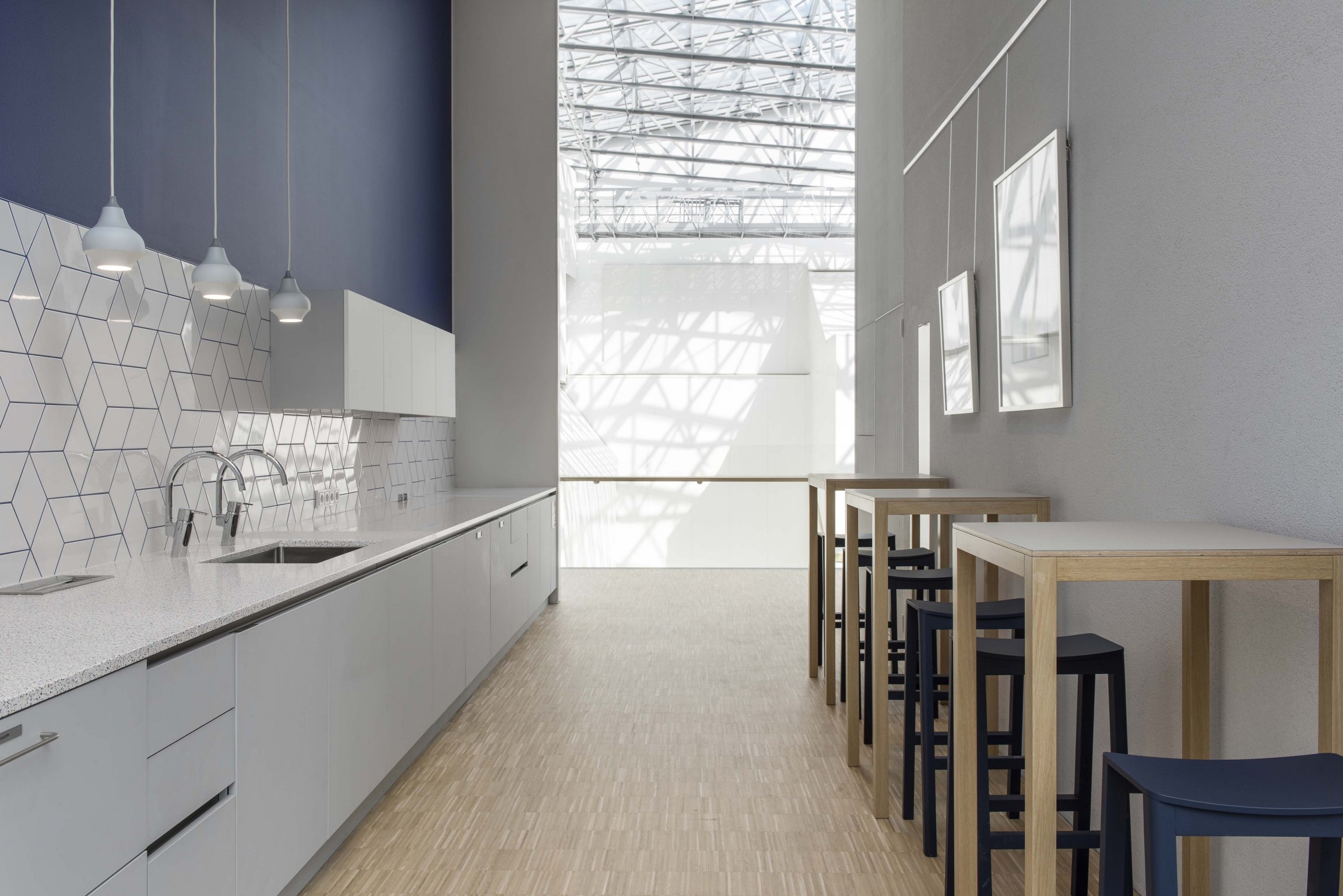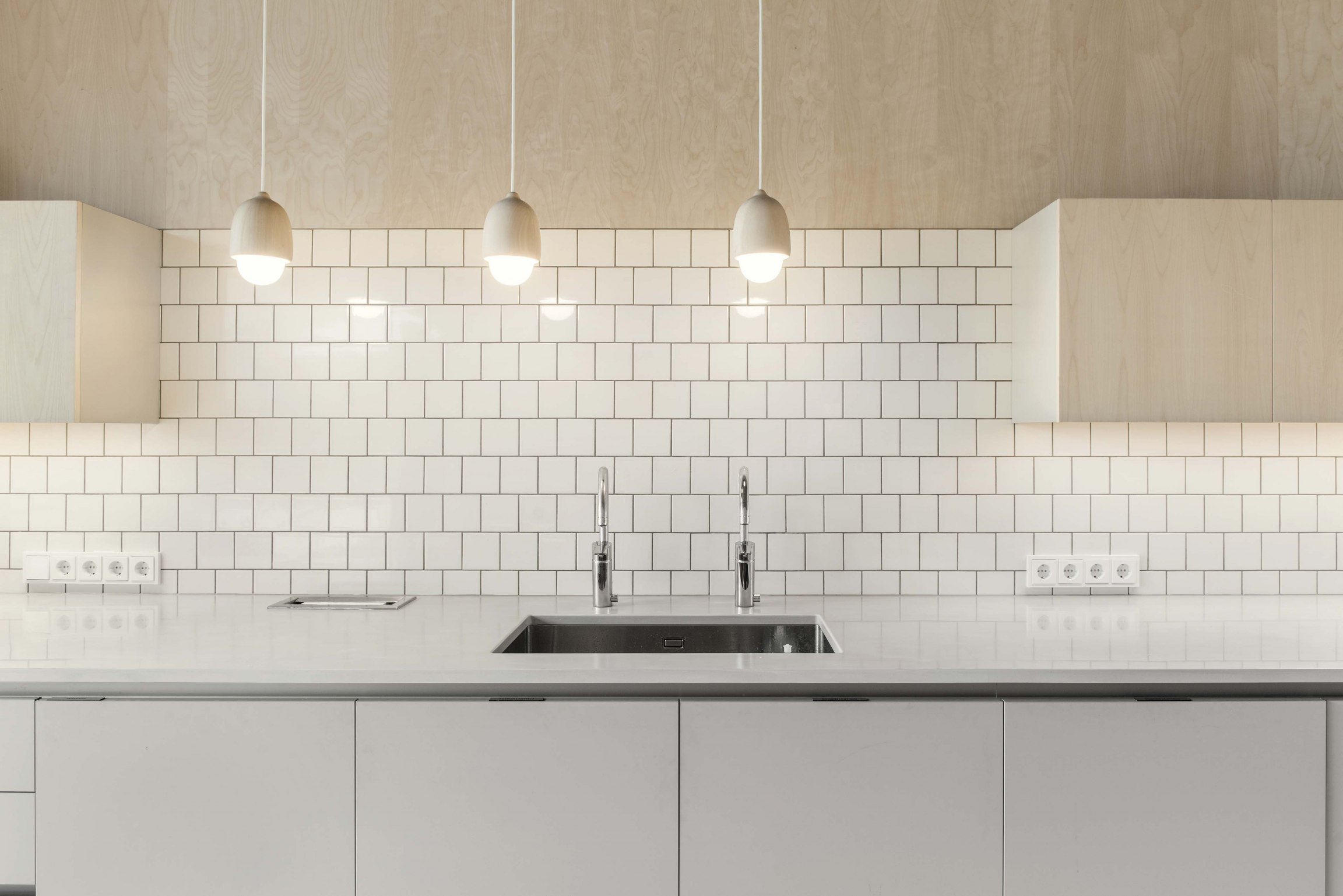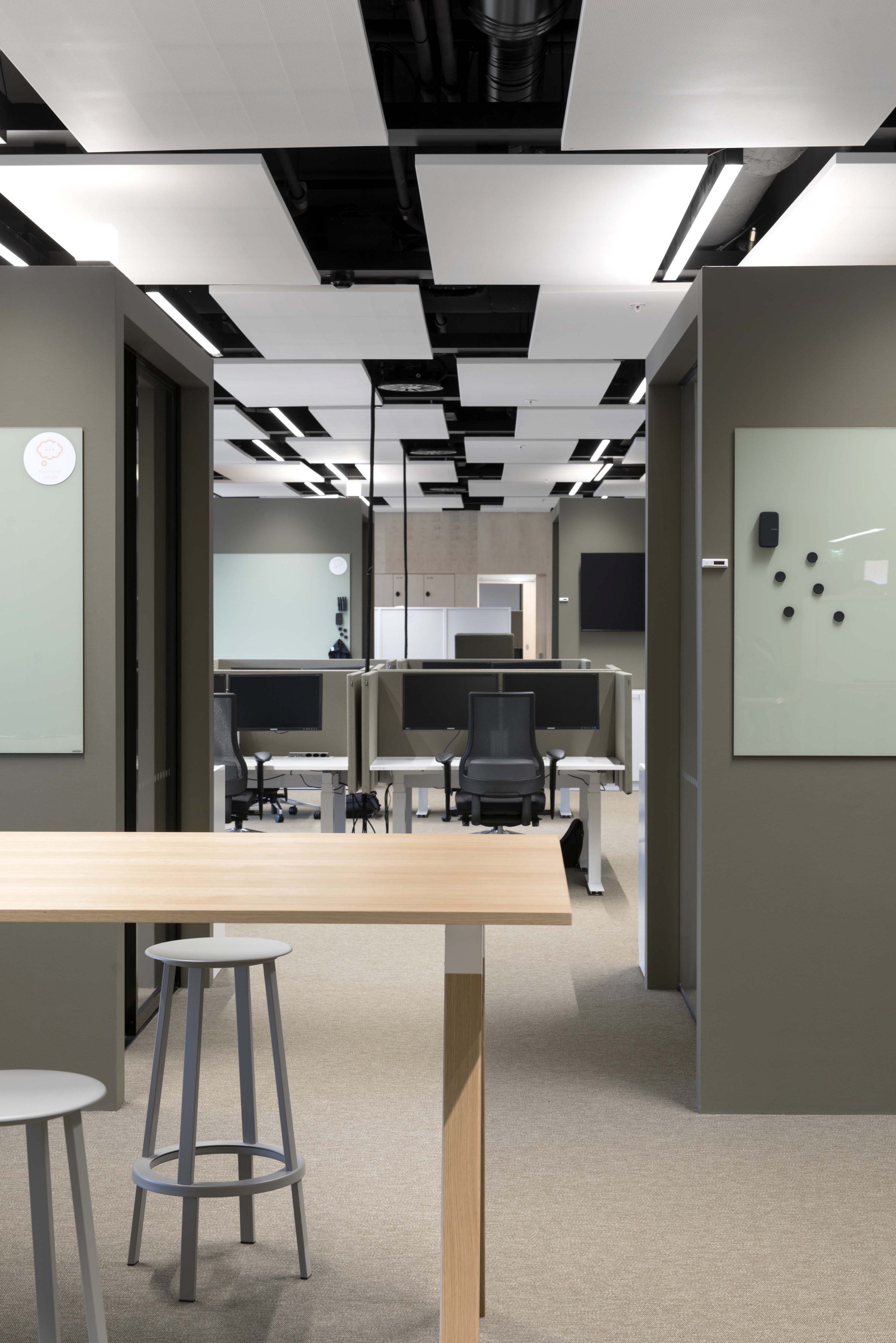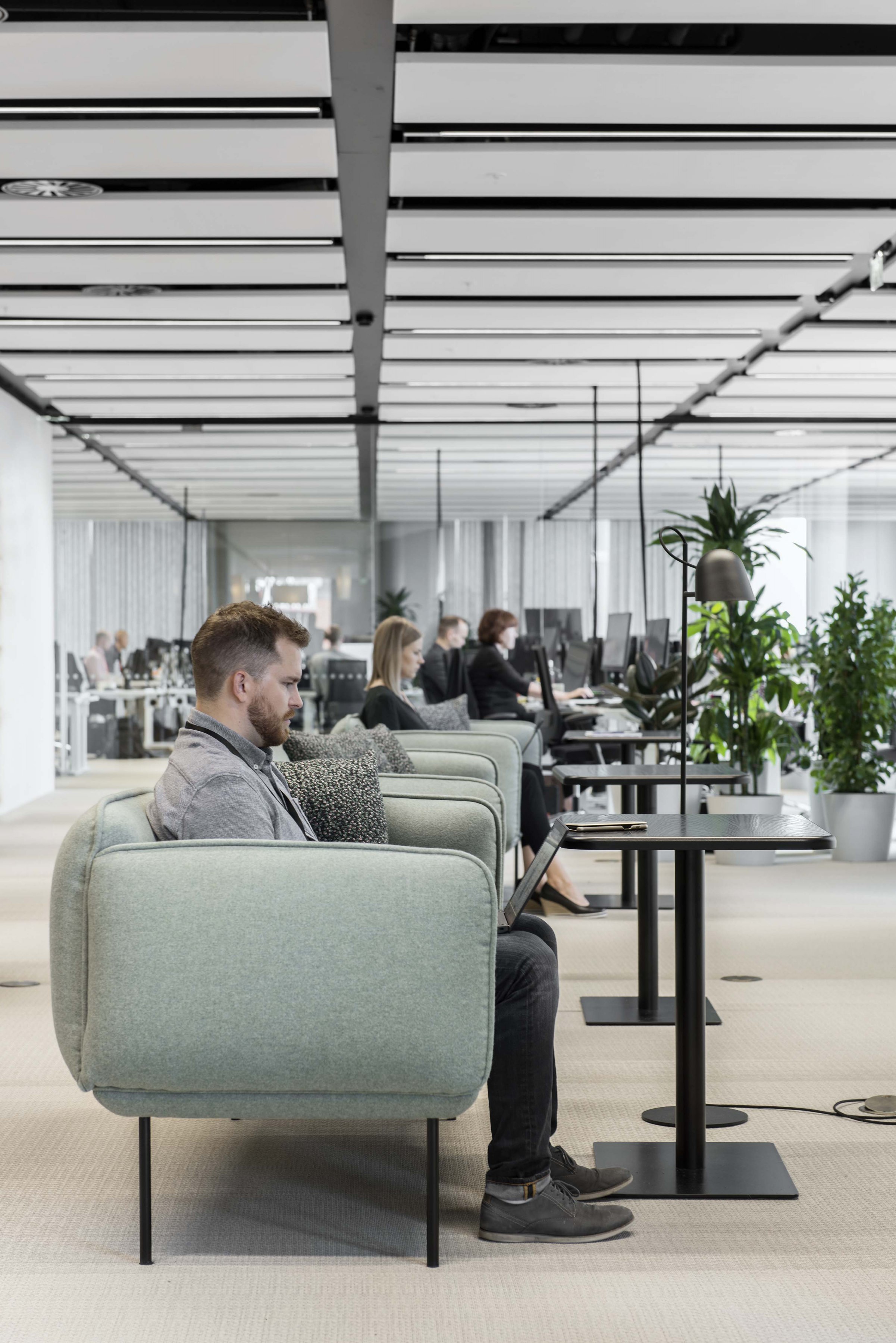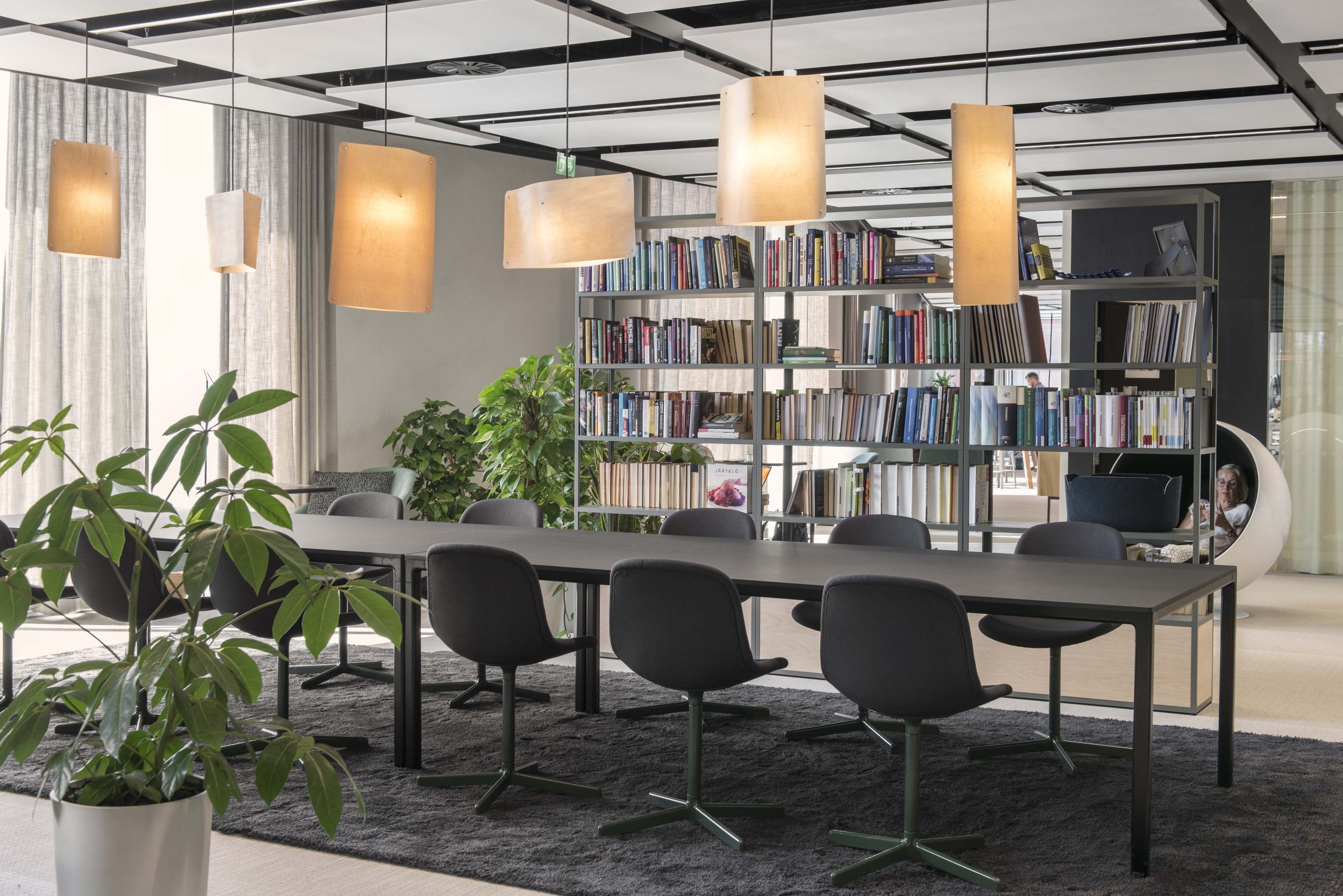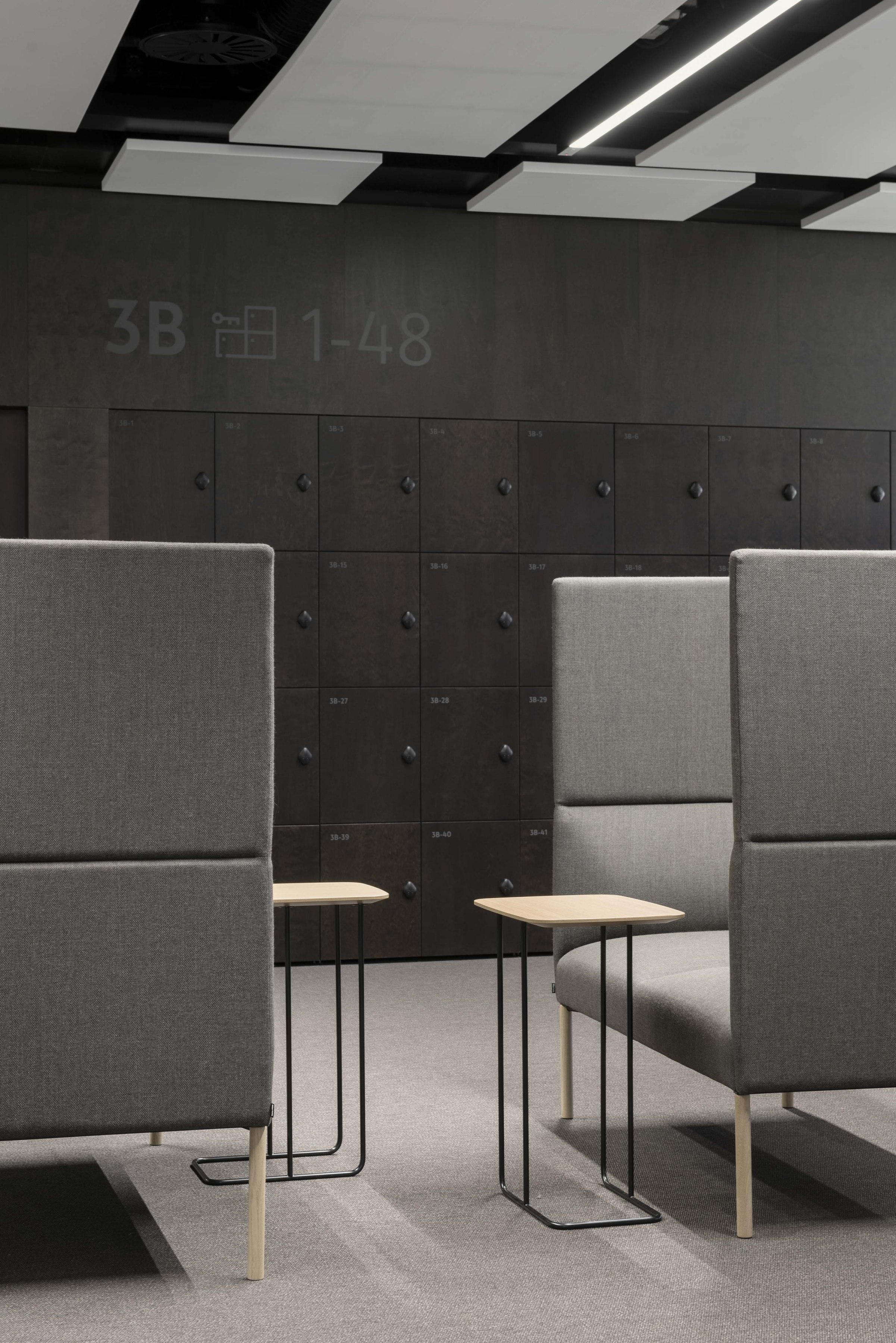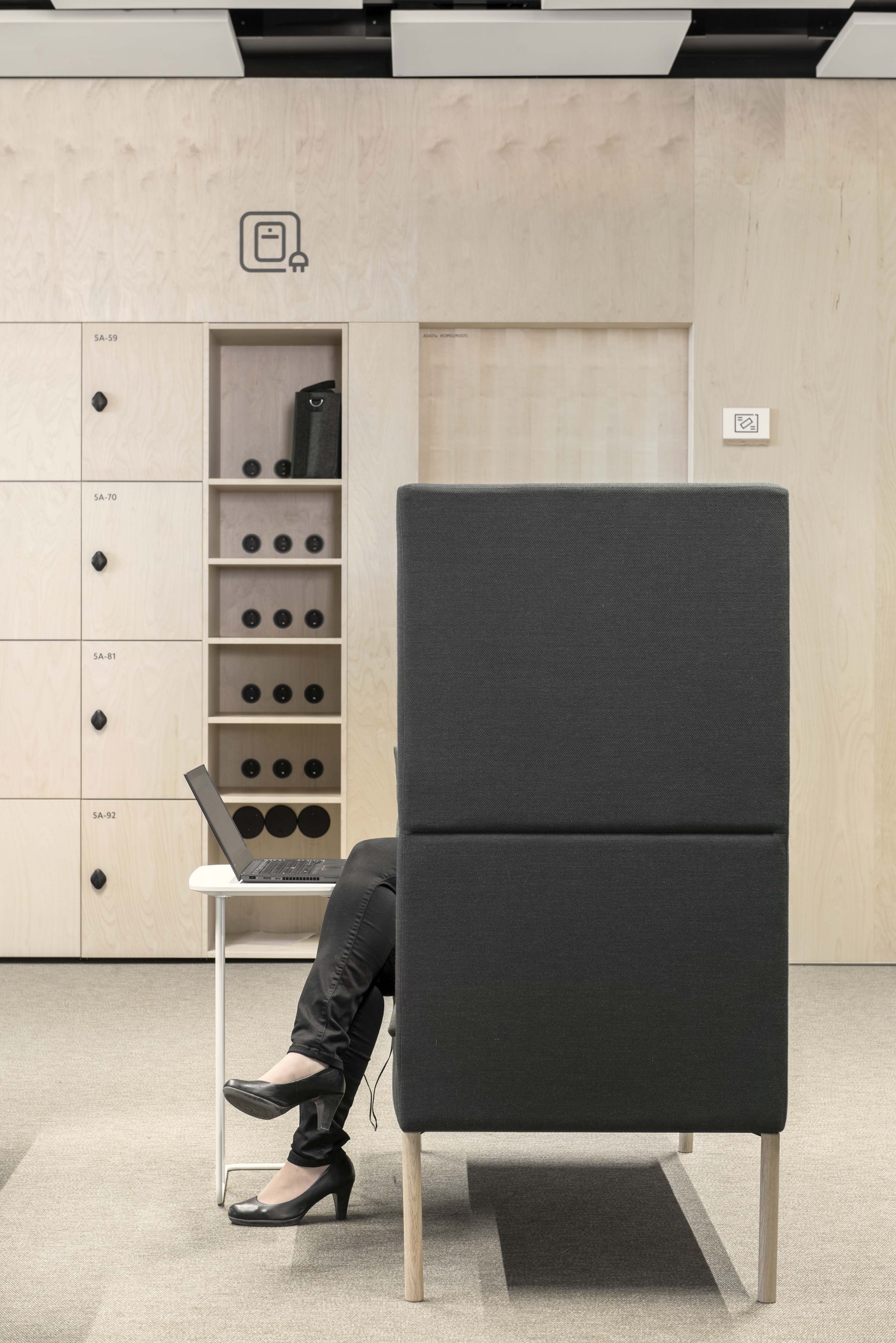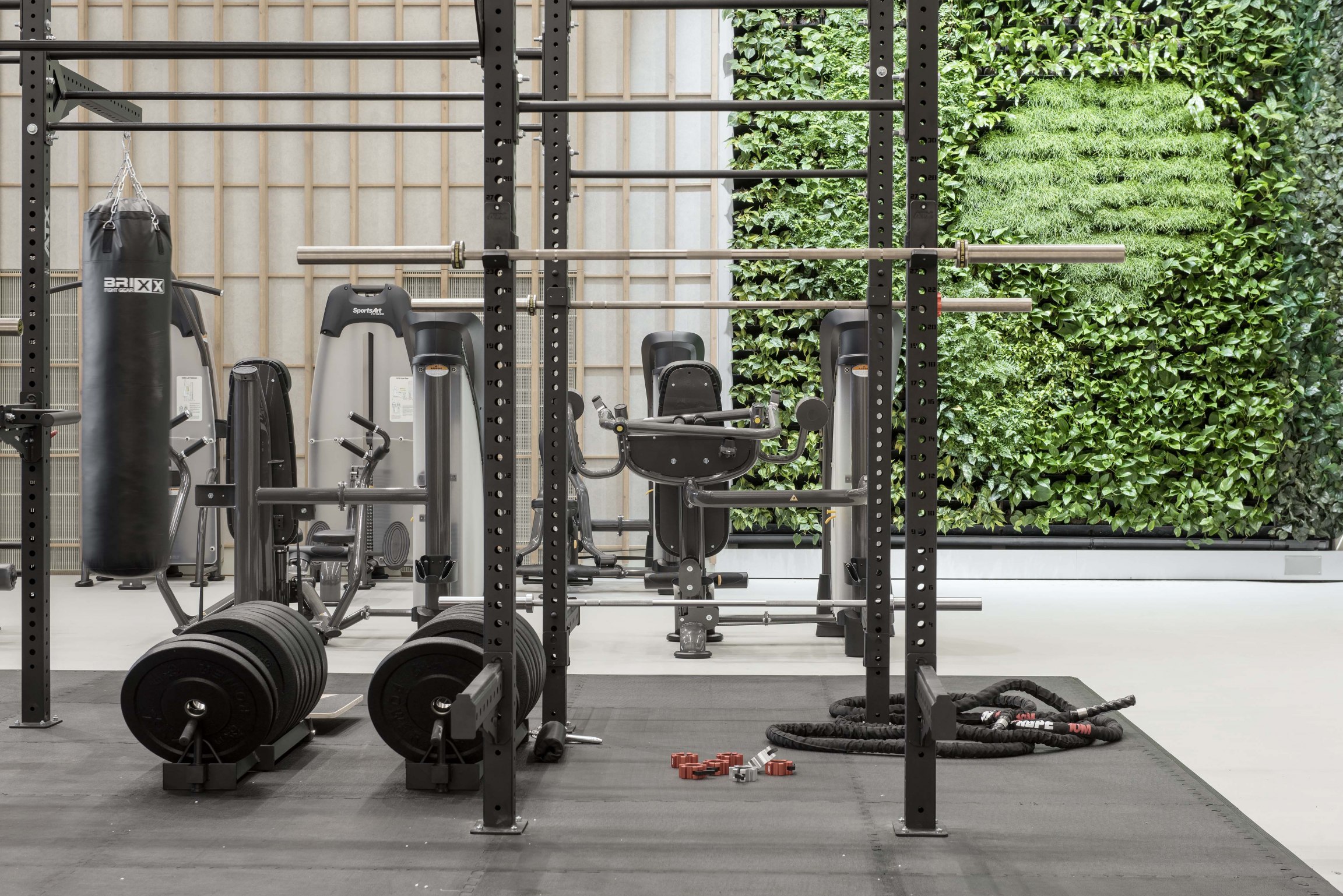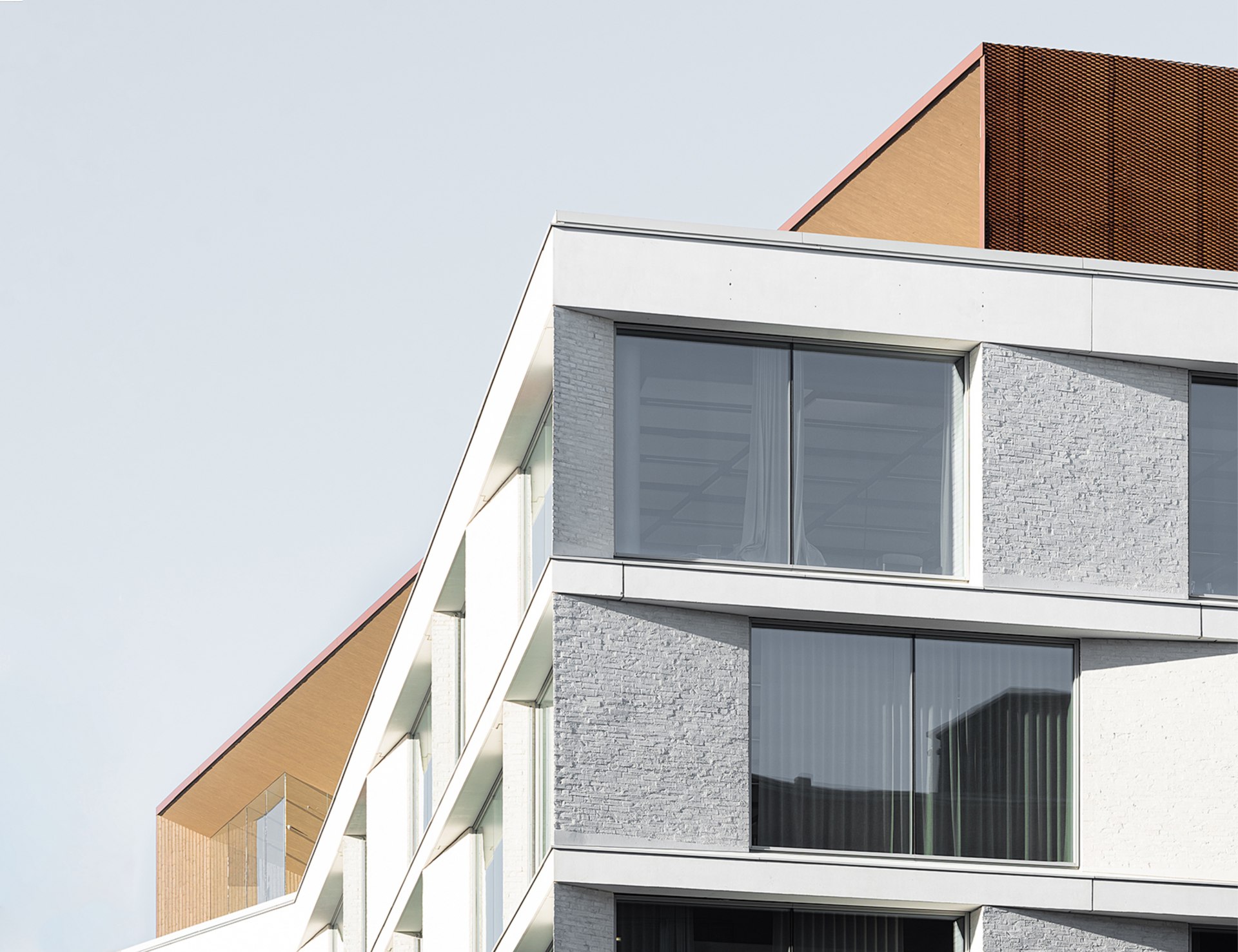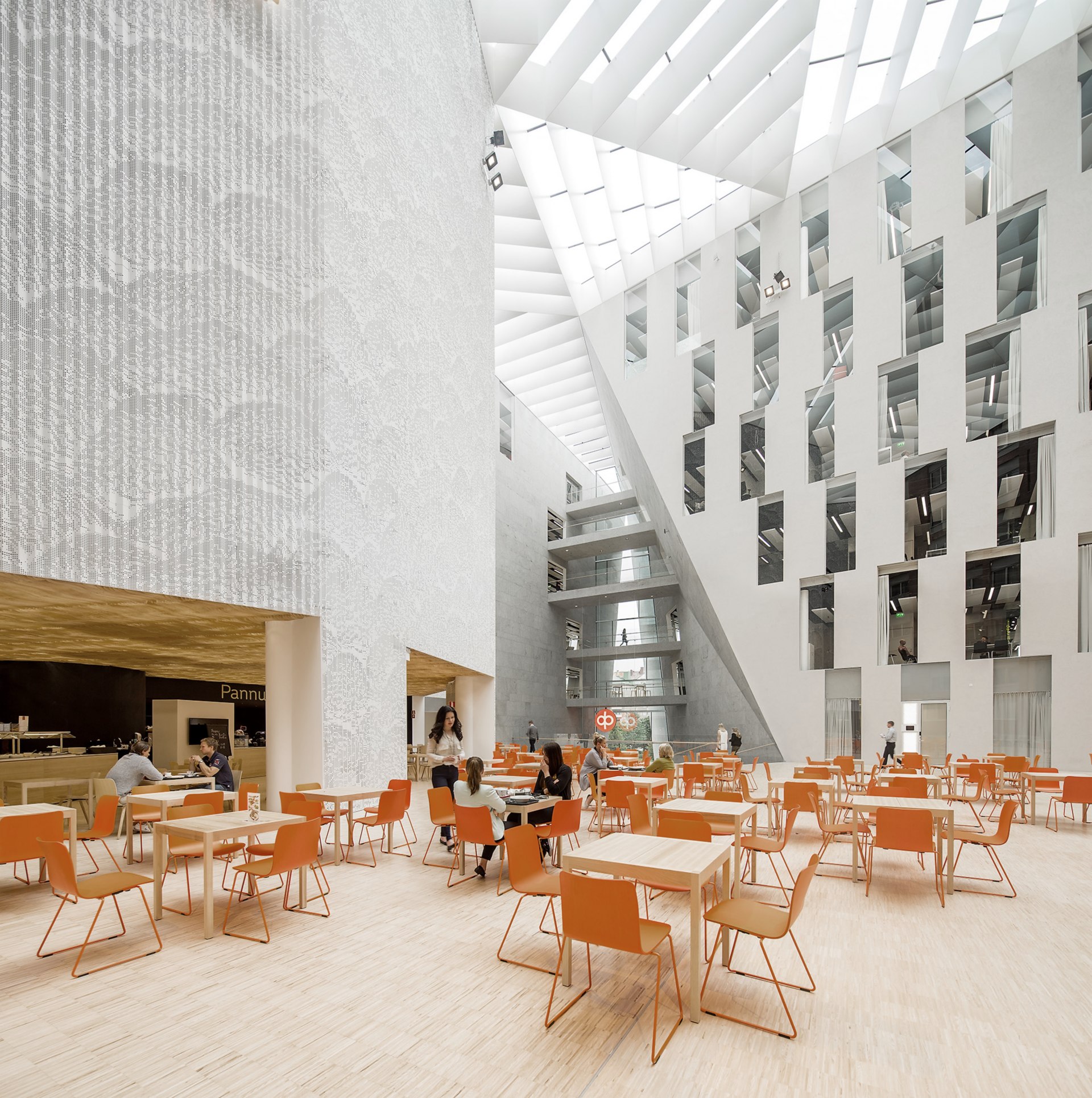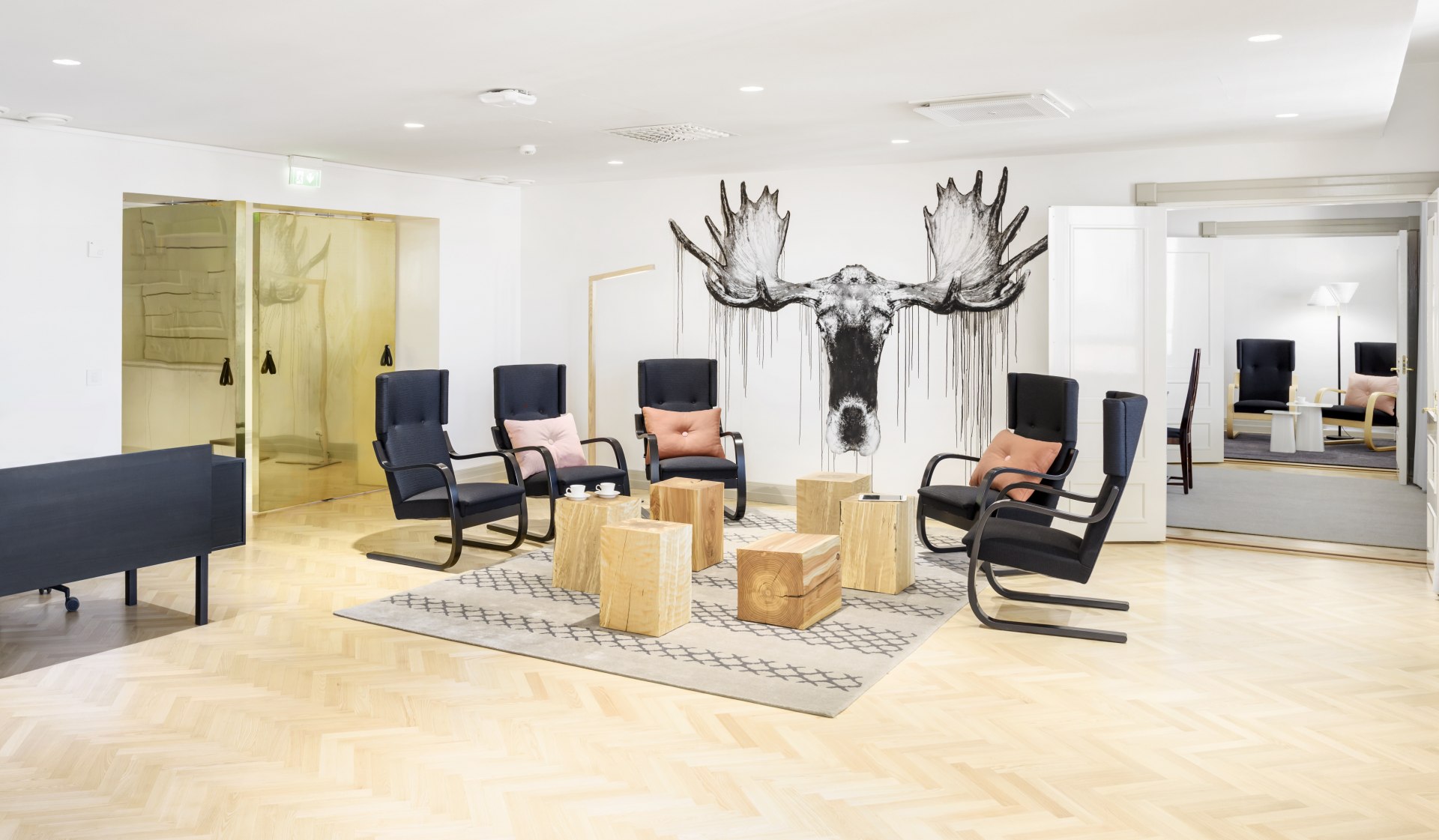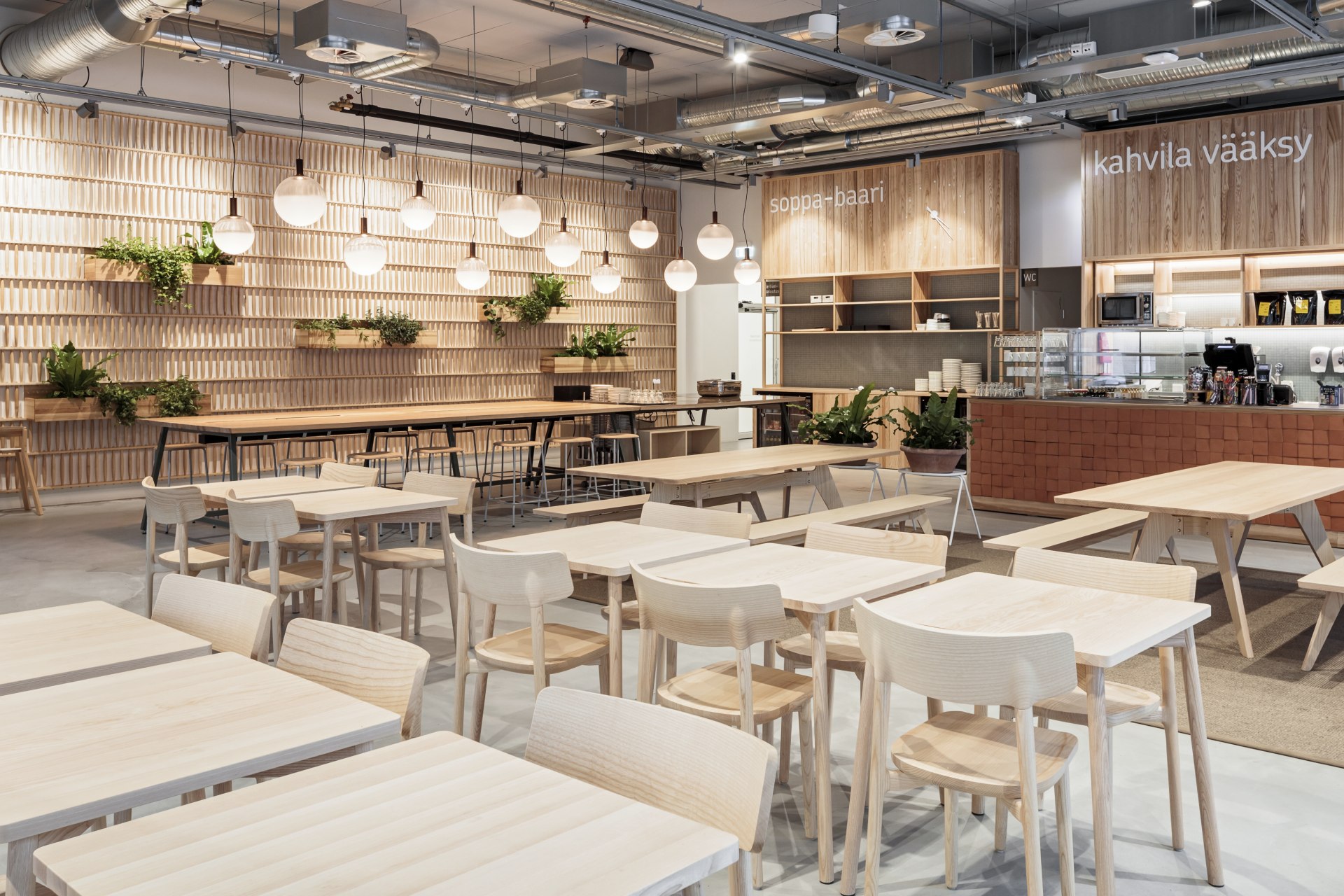K-Kampus Headquarters Interior
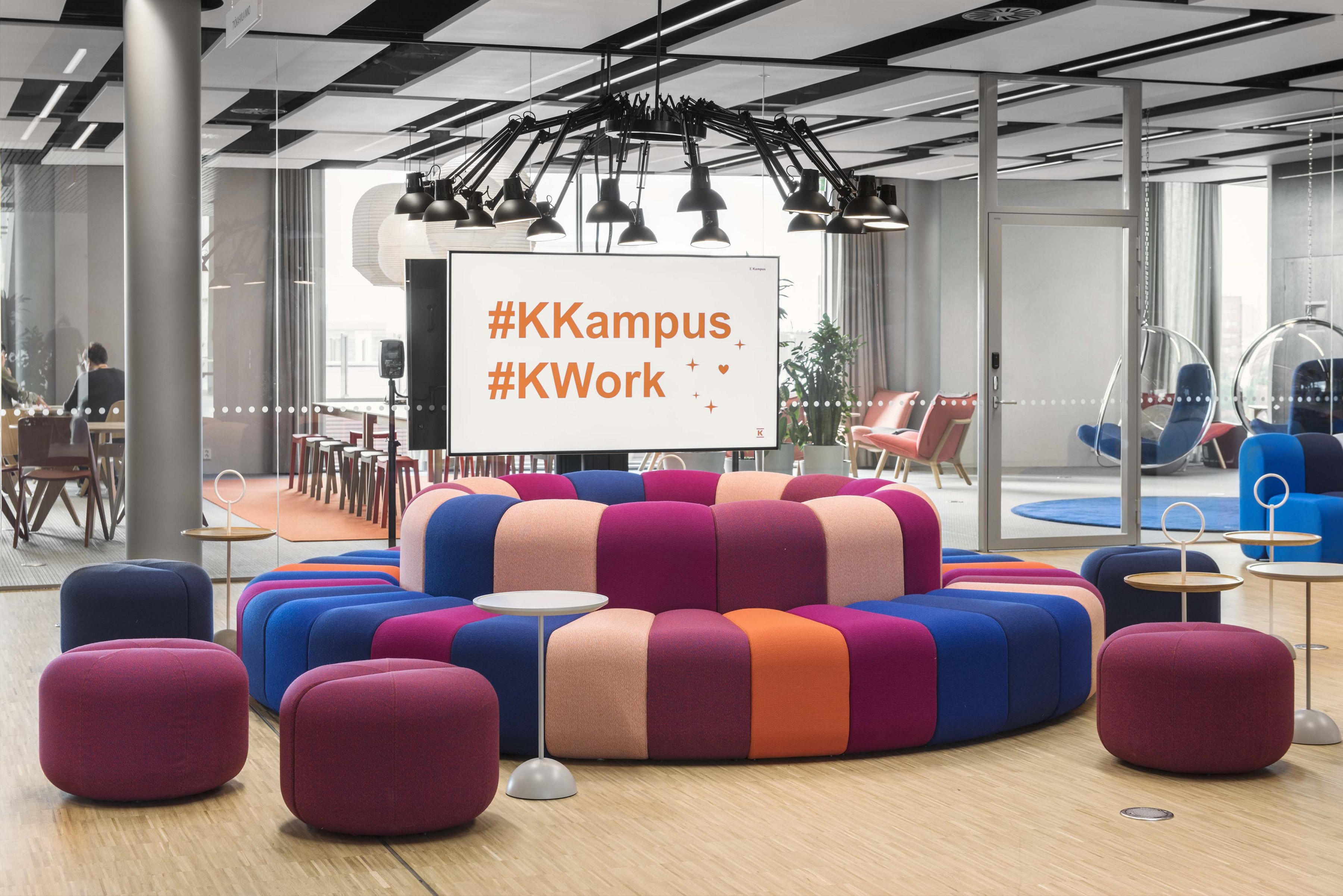
The timeless quality of the architecture and its pared down clarity continues inside the building where the emphasis is on the well-being of staff.
The main entrance opens up into the atrium courtyard that gives onto a public cafe as well as an auditorium which can be closed off behind partitions. The space is bathed in natural light that works well with the natural timber surfaces, the verdant green wall and use of glass. At the heart of this space, there is a stepped seating area made up of stairs using timber slats as well as a large scale staircase that doubles up as an active space for working; in much the same way all of the building’s interior areas do. The stairs lead to the dedicated office areas and meeting rooms that wrap around the atrium spanning all of four floors.
The aim has been to create a workspace that is inviting by feeling both warm and welcoming. Each level has its own stamp, apparent in the distinct furniture as well as colour and material palette that too varies from floor to floor. Comfort, coziness and a soft and sensuous feel have been important considerations in selecting the interior materials. Plants also play a big role in the interiors on all of the office floors. The interior lighting scheme combines even ambient lights with large numbers of spot lights for creating atmosphere.
Each of the four office floors is futureproofed ensuring flexibility in how it is occupied. The offices’ design lends itself to different methods of working within the same space and collaboration between Kesko’s different teams. The design strategy emphasises that all spaces that are open to Kesko staff can be used effectively as work stations. This is a move away from a more traditional approach to working only at one’s own desk. Instead, at Kesko, the overall fitout right down to IT points and power supply and lighting solutions ensures that itinerant working practices within the K-Kampus are fully supported.
Acoustics and pleasurable workspaces have been another focus at the HQ. Each floor has meeting rooms with break out spaces which include office kitchens. There are work cafés too on the different levels intended as meeting places as well as alternative workspaces. As the cafés have been positioned near meeting rooms, they readily serve visitors to K-Kampus.
The campus offices are divided into zones defined by the needs of staff. There are zones tailored for collaborative working and zones more suited for meetings in addition to zones that focus on solitary working practices. The meeting rooms intended for visitors face the atrium courtyard. These open onto generous huddle spaces that can be closed off as required. The solitary workspaces are designed so that they pace the character of the work stations by introducing quiet and calm areas amongst busier and more lively ones. All in all, there are over 100 meeting points amongst the variety of workspaces at K-Kampus.
JKMM was responsible not only for the main architectural design but also for the multi-space work environment concept and interior design across five floors, including versitile workspaces and meeting areas, as well as event spaces, showrooms, wellness facilities, and product research laboratories on the lower floors. The interior design of the street-level entrance lobby, café, media and studio spaces, and the second-floor staff restaurant was handled by dSign.
